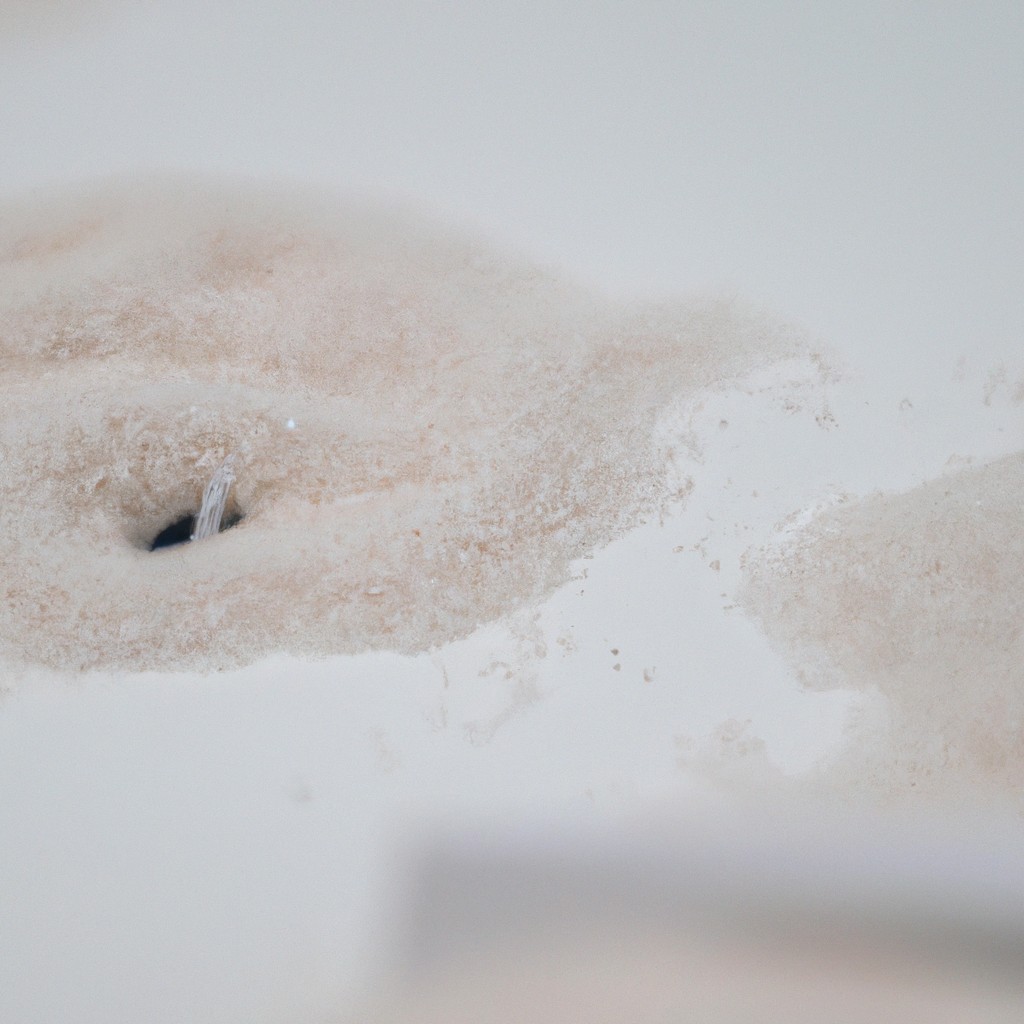Unseen to the naked eye, microplastics lurk in various corners of our homes, presenting an unexpected environmental and health challenge.
Microplastics, those tiny fragments of plastic less than 5mm in size, are not just polluting our oceans and wildlife, but they are also lurking unnoticed in our homes. From synthetic clothing to personal care products, kitchenware, and even the dust settling on your furniture, microplastics are omnipresent, posing potential risks to our health and the environment.
This article will delve into the common household items that may be a source of microplastics, offering detailed insights on how to identify them, understand their impact, and explore effective strategies to reduce their presence in our homes.
Key takeaways:
- Microplastics can absorb harmful chemicals and pose toxic effects.
- Microplastics accumulate in the environment, affecting ecosystems.
- Microplastics can end up in our bodies, with potential health risks.
- Wildlife can consume microplastics, often with fatal consequences.
- Microplastics are an almost indelible environmental pollutant.
Understanding Microplastics: Definition and Dangers

Microplastics are tiny fragments of plastic, scarcely larger than a sesame seed, measuring less than 5mm in size. They’re a side effect of our plastic-reliant society, originating from a variety of sources, such as broken down plastic waste, industrial products, and synthetic textiles.
While deceptive in size, microplastics pose several dangers:
- 1. Toxic Effects: They can absorb harmful chemicals and, once ingested by humans or animals, can cause potential toxic effects.
- 2. Environmental Hurt: They accumulate in the environment, affecting terrestrial and aquatic ecosystems.
- 3. Human Health Risk: Microplastics can end up in our bodies, via food or air, with potential for adverse health effects.
- 4. Wildlife Disruption: They can be mistakenly consumed by marine and terrestrial wildlife, often with fatal consequences.
- 5. Persistent Pollutants: Their durability and resistance to decomposition make them an almost indelible environmental pollutant.
Their omnipresence warrants a serious consideration of their dangers, from both ecological and a human health standpoint.
Microplastics Presence in Clothes and Textiles
Many of the everyday clothes and textiles found in homes are synthesized from petroleum-based materials such as polyester, nylon, and acrylic. When washed, these items can shed tiny fragments, known as microplastics, into the wastewater stream:
1. Microscopic size allows for easy transportation, often ending up in water bodies.
2. High Durability due to the nature of plastic materials breaking down slowly.
3. Accumulation over time creates significant environmental and health concerns.
4. Common in Polyester, nylon, and acrylic clothes which when washed often shed these microplastics.
5. Efficient wastewater treatment can reduce but not eliminate these particles leading to their accumulation in environment.
Knowing the composition of your clothes can help reduce microplastic pollution. Opting for natural fibers, such as cotton, linen, or wool, and washing less frequently may support the effective reduction of microplastics abundance in the wastewater.
Microplastics in Cookware
Plastic compounds often penetrate cooking utensils and kitchen gadgets made from silicone or non-stick materials. When heated, they may release microplastic particles into food.
– Varieties of cookware, including silicone spatulas and non-stick frying pans, contain plastic compounds.
– Heat from cooking can release these compounds into food.
– Research indicates that microplastics are harmful when ingested.
– High-quality alternatives, such as stainless steel and cast iron pans, reduce the risk of microplastic ingestion.
– By reducing the use of plastic-based cookware, individuals can minimize their microplastic consumption and the environmental impact.
Presence of Microplastics in Tea Bags and Coffee Strainers
Nonetheless, the unsuspected villains in the form of tea bags and coffee strainers increases the microplastic pollution in homes. Surprisingly, these daily essentials contribute significantly to indoor microplastic contamination because:
- 1. Certain tea bags, when heated, release numerous plastic particles into the liquid – an estimated amount surpasses the recommended safe levels significantly.
- 2. Coffee strainers, particularly those made of nylon or coated with gold, have the potential to leach microscopic plastic particles into the brew when subjected to high temperatures.
- 3. Often, paper tea bags and coffee filters appear safe but might be sealed or treated with a plastic, heat-resistant material that could end up in the drink.
While this information may seem disconcerting, various measures can help reduce this hidden exposure to microplastics in daily routines.
Microplastics Found in Pet Supplies
Numerous grooming products, toys, and feeding apparatus for pets contain microplastics in varying degrees. They enter the animals’ bodies during ingestion or through the skin, which could lead to health complications like inflammation or gut issues.
1. Grooming Products: Brushes, combs, and shampoos could contain microplastics that get into a pet’s system during use.
2. Toys: Hard plastic toys or those with stuffing might break down into microplastics during wear and tear. Pets inadvertently consume these during play.
3. Feeding Apparatus: Plastic bowls, containers, or automated feeding machines may shed microplastics that pets consume alongside their food.
4. Cages and Habitats: Aquatic habitats, bird cages, or even small mammal enclosures constituted of plastic can progressively release microplastics.
Understanding these points affects both product choices for pets and further awareness of how microplastic pollution permeates life.
Prevalence of Microplastics in Gift Wrapping and Decorations
While visually appealing, many gift wraps and hanging decorations are laced with microplastics due to added glitter or metallic sheen. These ornamental items often shed their tiny plastic particles into our homes, contaminating various surfaces.
Key points:
- 1. Glitter and metallic finishes on gift wraps and decorations are often comprised of microplastics.
- 2. Normal usage or disposal can cause these items to shed microplastics into our interior environments.
- 3. These particles can find their way onto our hands, food, or even be inhaled, posing potential health risks.
- 4. Sustainability-focused alternatives count in addressing the prevalence of microplastics in such items.
Impact of Microplastics On Indoor Air Quality
Microplastics can be easily swept up and disseminated into the atmosphere while cleaning homes or simply moving around. These minute particles, invisible to the naked eye, can have far-reaching impacts on indoor air quality, including:
- Elevated concentration levels due to lack of proper filtration, especially in areas with poor ventilation.
- Increased inhalation risk, which could potentially lead to respiratory ailments.
- Enhanced likelihood of toxins binding with air-borne microplastics, intensifying the potential health hazards.
- Potential for long-term accumulation in household dust which can re-contaminate the air upon disruptions.
Thus, indoor air quality stands at risk from microplastics, highlighting the need for effective steps in regulation and mitigation.
Microplastics Detection Techniques
Indeed, ascertaining the presence of microplastics requires precision and a systematic approach. Common techniques used include:
- Visual Inspection: Initially, samples are checked manually under a microscope, which helps in separating larger plastic particles from the material.
- Infrared Spectroscopy: Leveraging a method known as Fourier-transform infrared (FTIR) spectroscopy assists in characterizing and identifying these small plastic particles. It’s a technique where microplastics absorb infrared light, helping reveal their chemical structure.
- Raman Spectroscopy: This exists as another powerful tool for microplastic detection, providing detailed information about the chemical structure and composition of the particles. It works based on the scattering of monochromatic light, usually from a laser in the visible, near-infrared, or near-ultraviolet range.
- Density Separation: Lastly, density separation methods are applied. An instrument like a hydrocyclone performs the task of segregating materials based on their density. It functions by creating a spinning vortex, which causes heavier particles to move towards the outer edge, further separating them from lighter microplastics.
Efficient Ways to Reduce Microplastic Pollution in Homes
Maintaining a minimalistic lifestyle is key to reducing microplastic pollution. Opting for organic materials, such as cotton, linen, and wool in clothing and other household items, can significantly cut down the amount of microplastics that enter the environment. Using stainless steel, glass, or cast iron cookware instead of non-stick options prevents the release of plastic particles during cooking.
A preference for loose tea leaves and manual coffee brewing methods helps avoid microplastics often found in tea bags and coffee strainers. Similarly, choosing pet supplies made of untreated wood, ceramics, or metal can prevent pets from ingesting microplastics.
Gift wrappings and decorations can also be a source of microplastics. Replacing them with reusable fabric wraps or biodegradable options can limit exposure. Another strategy is regular home cleaning as microplastic particles can contribute to indoor air pollution.
Lastly, increasing awareness and knowledge about the hazard of microplastics, through up-to-date scientific research and active engagement in environmental campaigns, is crucial to mitigate their impact effectively.
FAQ
What common household items are microplastics found in?
Microplastics are commonly found in household items such as laundry and dishwasher pods/tablets, various detergents, disinfectants with scrubbing agents, and certain types of cosmetics.
What are microplastics in our home?
Microplastics are minuscule particles, often unseen by the naked eye, existing in the environment, which are fragments of plastic less than 5mm in dimension.
How can you detect microplastics?
Microplastics can be detected and quantified in water using FTIR Spectroscopy, py-GC/MS, and Raman Spectroscopy.
What items have the most microplastics?
The items with the most microplastics are drinking water, both bottled and tap, with studies demonstrating plastic particles in 93% of bottled water samples and 83% of global tap water samples.
How are microplastics affecting indoor air quality?
Microplastics, often released from household items, can worsen indoor air quality by accumulating in household dust and being released into the air, potentially posing health risks when inhaled or ingested.
What are the potential health impacts of ingesting or inhaling microplastics?
Ingesting or inhaling microplastics can potentially lead to inflammation, genotoxicity, oxidative stress, apoptosis, and necrosis, which are linked to various conditions, including cancer and cardiovascular diseases.
Are there any effective methods for removing microplastics from the home environment?
Effective methods for removing microplastics from the home environment include regular dusting and vacuuming, investing in a high-efficiency particulate air (HEPA) filter for the vacuum, and washing clothes less frequently or using a washing bag to catch microplastic fibers.
